Scarring vs. Non-Scarring Alopecia: Causes and Treatments
- Written by Lordhair Team
- Dec 11, 2020
- |
- 17 min read
 Listen to the full text
Listen to the full textEven after all these decades, awareness of scarring and non-scarring alopecia is still not at its prime. This can be explained by the limited knowledge and self-help resources available on both types of alopecia. Since millions of people aren’t aware of the alopecia types, they easily fail to take or recommend the right recovery measures. This is precisely why we decided to help!
In this blog, Lordhair will share the differences between scarring and non-scarring alopecia in details so that the right recovery measures can be taken in a timely manner. From meaning to symptoms and causes to treatments, we will cover everything!
Let’s first put the spotlight on the meaning of scarring alopecia.
Scarring alopecia
Meaning of scarring alopecia
Scarring alopecia refers to a group of hair loss disorders that can occur in both men and women and is characterized by permanent hair tissue damage. In this medical condition, the underlying tissues in and around the hair get destroyed or scarred and replaced by fibrous tissue.
Once the hair follicles are damaged by scarring alopecia, the hair mostly can't grow back using medications and therapies. Thankfully, this type of alopecia hair loss is relatively uncommon and is identified in less than 3% of the hair loss patients.
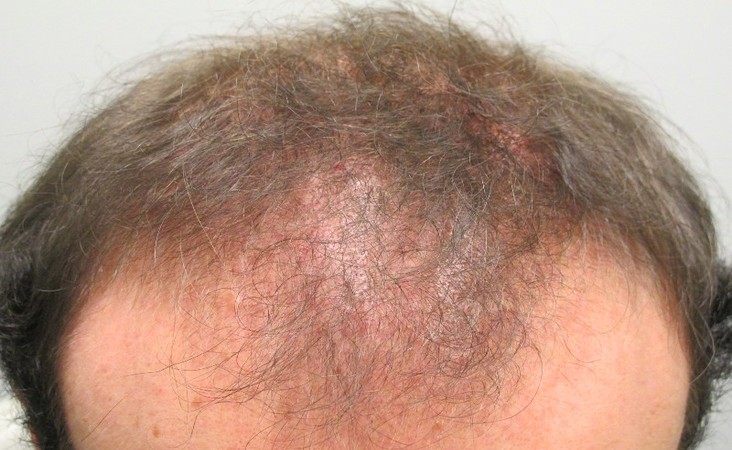
Symptoms of scarring alopecia
Scarring alopecia generally starts with the appearance of small patches of hair loss which are unnoticeable at first. These bald patches tend to grow larger over time. Hair loss caused by scarring alopecia can progress slowly over a period of a few years or happen rapidly within a few months. There is no specific timeline for hair deterioration.
Usually, the hair loss is accompanied by symptoms such as severe itching, pain, burning, and shedding of hair in bunches. The inflammation that triggers the destruction of follicles happens beneath the skin surface and doesn’t show any scars on the scalp at the initial stages. In some cases, scarring alopecia hair loss may not show typical symptoms at all.
However, once the hair follicle gets scarred, the patient may begin to experience other symptoms such as redness, scaling, pigmentation, pustules, or plyboard-like appearance (crust) on the scalp.
Causes of scarring alopecia
The primary cause of scarring alopecia hasn’t yet been fully understood by doctors and medical researchers. However, they have discovered some reasons behind this alopecia hair loss condition.
The followings are major causes of scarring alopecia:
#1 Destruction of hair follicles stem cells
Destruction of hair follicle stem cells (HFSC) is one of the major causes behind scarring alopecia. HFSCs are located in the bulge region of hair follicles of the outer root sheath. These are responsible for producing transient amplifying cells that migrate upwards and downwards to restore and renew the upper follicle.
Stem cells also handle the regrowth of the lower hair follicle but scar tissues block these biological pathways and destroy them. The same triggers hair loss.
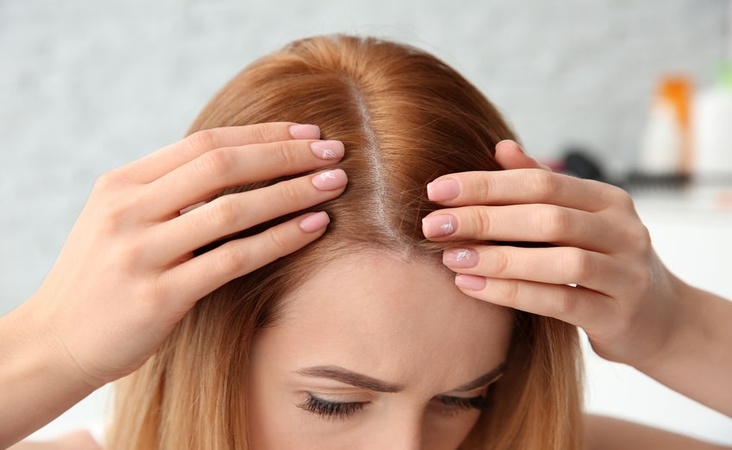
#2 PPAR abnormalities
The involvement of proliferator-activated receptors (PPAR) is another cause of scarring hair loss. Being a receptor protein, PPAR gamma plays a crucial role in maintaining the integrity of hair follicle cells, including stem cells and sebaceous glands.
The abnormal function of PPAR gamma leads to dysfunction of the sebaceous gland and the same causes the formation of toxic lipids. When the level of lipids grows, inflammation tends to take place, which damages the hair follicles and triggers hair loss.
#3 Excessive heat
Using styling tools such as hairdryer and straightener is the routine of almost every modern-day man and woman. They’re powerful, convenient, and probably the easiest ways to attain the desired look. Despite that, they do damage the hair and the scalp.
Excessive heat coming out of the hairdryer and straightener slowly dries away the scalp and removes the natural oils from strands, causing them to break or crack. What’s worse, the heat inflames your scalp and weakens your hair roots as well. The same may be a contributing reason behind scarring alopecia.

#4 Injuries and burns
Severe injuries and burns that go beyond the superficial layer of our scalp not only trigger excruciating pain but also damage the lower layers of skin that contain hair follicles. In some cases, such injuries and burns completely destroy hair follicles and may trigger some forms of scarring alopecia.
Unfortunately, the scarring caused by injuries and burns is permanent. In simple words, one may not see any hair growing out of the infected area on their scalps again. Other factors such as tumor can also cause scarring alopecia among men and women.
Understand the biggest reasons behind hair loss at 25 in males.
Treatments of scarring alopecia
Since scarring alopecia makes for a lot of damages and permanent hair loss, the treatment for scarring alopecia should be aggressive. Based on different scarring alopecia conditions, we have prepared a list of its recommended treatments.
The following treatments can help prevent scarring alopecia from becoming worse:
#1 Corticosteroids
Scarring alopecia that involves Lymphocytic inflammation such as planopilaris and frontal fibrosing alopecia is treated mainly with corticosteroids. The application of topical corticosteroids helps to curb the itching and burning on the scalp.

In some cases, dermatologists also recommend using corticosteroids injection. Consistent use of injections causes shrinking of skin of the injected areas and stops further hair loss. However, make sure to take a prescription as corticosteroids can also lead to weight gain, high blood pressure, diabetes, and osteoporosis.
#2 Hair systems
Unlike corticosteroids, hair systems don’t have any side effects. Also known as modern hair patches, these are used widely by men and women who have reached an advanced stage of hair loss due to medical conditions like scarring alopecia. The hair system is a non-surgical solution that is designed with natural human hair woven into a skin-friendly base that hides the scarred areas.
Hair systems can be easily secured with the use of tape, adhesive, or clips. Check out Esteban’s hair transformation to witness how hair patches can completely change your overall look.
Benefits of using a hair system
Whilst there are several benefits of using a hair replacement system to fight alopecia hair loss of all kinds, we have listed 2 popular ones only:
- Quick recovery: Unlike other hair recovery treatments, there is no waiting time for hair systems. All you need to do is buying a good quality hair wig and you are good to go with that look of full head of hair!
- Highly affordable: Hair patches are completely affordable and practical recovery solutions if one’s scarring alopecia hair loss is pretty extreme. By spending less than US$1000 a year, you can enjoy the new fresh look you’ve been longing for.
Check out our wide collection of hair systems for men and hair wigs for women
#3 Antiseptic shampoos
For those suffering from neutrophilic scarring alopecia, an antiseptic shampoo is a widely recommended treatment. Being rich in pyrithione zinc, this OTC medication has both antimicrobial and antifungal natures. It also helps in dealing with inflammation and itchiness.
How to use: Apply antiseptic shampoo on your scalp and let it stay on the scalp for 5 minutes. Afterward, wash it with mild water. Washing your scalp with medicated shampoo twice a week will help you prevent neutrophilic scarring alopecia within months.
Above are some treatments used to deal with scarring alopecia. It is highly advised to take a prescription from a dermatologist before proceeding further with any medication.
Now that you know everything about scarring alopecia, let’s talk about hair loss caused by non-scarring alopecia.
Non-scarring alopecia
Meaning of non-scarring alopecia
As the name suggests, non-scarring alopecia is a hair loss disorder that leads to thinning or balding of the scalp without scarring around the follicle. Also called non-cicatricial alopecia, it is the most commonly seen hair loss type among men and women.
Unlike scarring alopecia, there is no skin irritation or inflammation in non-scarring alopecia. This type of hair loss may spread throughout the scalp or is limited to certain spots. Experts hold the opinion that non-scarring alopecia hair loss can occur both suddenly and gradually.
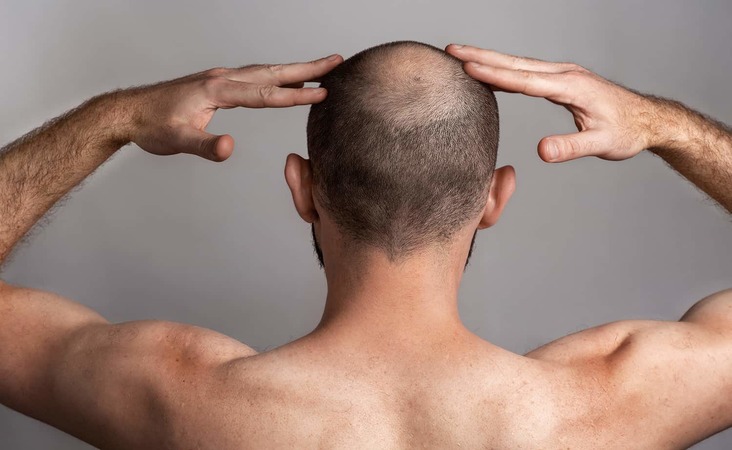
Symptoms of non-scarring alopecia
The followings are the symptoms of non-scarring alopecia among men and women:
- Losing hair strands in an unusual pattern
- Losing hair strands rapidly at an early stage
- Bald spots on beard, eyebrows, and other parts of the body
- Sudden weight gain
- Muscle weakness
- Intolerance to cold temperatures
- Losing a lot of hair strands while combing or taking a bath
- Hair clumps while running fingers through strands
Causes of non-scarring alopecia
Non-scarring alopecia can be triggered by a huge number of reasons. Here are the most common causes:
#1 Androgenetic alopecia
This is the most common cause of non-scarring alopecia. When an individual gets older, his body begins producing more androgen hormones. These hormones, including testosterone, trigger baldness in very specific patterns among men and women.
In men, androgenetic alopecia is manifested by a receding hairline or hair loss on the crown of the scalp. On the other hand, women might experience non-scarring alopecia as a:
- Wider hair parting
- Receding hairline
- Thinning on top of the head in a circle, starting just behind the hairline.
#2 Alopecia areata
As another common cause of non-scarring alopecia among men and women, Alopecia areata is an autoimmune hair loss disorder in which our own body attacks the hair follicles, mistaking them for bacteria or viruses. This condition results in circular bald areas (coin-shaped) around the scalp.
At first, these coin-shaped bald patches might be unnoticeable, but as time passes, one may begin to see them on his scalp. In some cases, hair grows back on its own. While in others, the hair loss caused by alopecia areata is permanent.
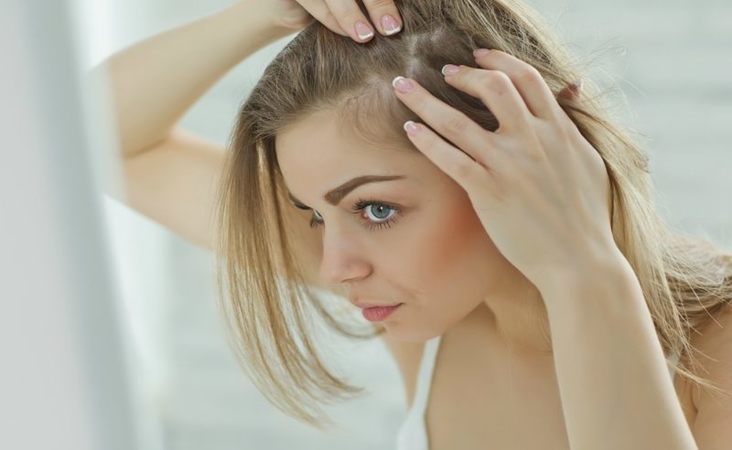
#3 Trichotillomania
Trichotillomania is a mental disorder that involves recurrent, irresistible urges to pull out strands from the scalp. Sometimes called hair-pulling disorder, it occurs because of severe stress and anxiety, causing men and women to pull out their hair.
Pulling out hair strands from the scalp often leaves patchy bald spots, which causes significant distress and can interfere with social functioning. People suffering from this non-scarring alopecia condition could also pull out hair from eyebrows, chest, and other areas of their body despite putting resistance to the habit.
#4 Telogen effluvium
As a temporary form of hair loss that affects women more than men, Telogen effluvium usually results from other health challenges such as low thyroid, lack of iron, severe stress, and childbirth. Hair follicles follow a cycle of rest and growth but when this cycle is disrupted, hair loss may commence.
Telogen effluvium hair loss starts all of the sudden and continues until the cycle is over. Then, the hair strands grow again within a few months before beginning to shed, once again.
Read everything you need to know about telogen effluvium hair loss.
Treatments of non-scarring alopecia
There is a wide range of treatments for non-scarring alopecia hair loss. Following an evaluation for the above-listed conditions and the patterns of hair loss, men and women can pick the right option from these treatments:
#1 Follicular Unit Transplantation (FUT)
Follicular Unit Transplantation (FUT), popularly known as strip hair transplant surgery, is a minimally invasive surgical method to help cover small bald spots caused by hair loss. A surgeon cuts a strip of skin from your scalp, usually from the back of your head, removes follicles from the strip and transplant them into the bald areas of the scalp
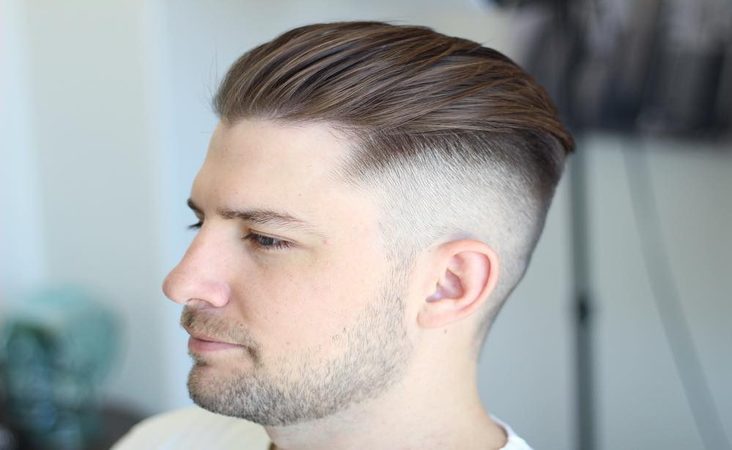
The exact size of the strip depends on the number of follicles needed to cover an individual's bald spots. Complications with FUT are rare but some complications after the procedure include:
- Unnatural looking hair
- Bumps
- Scarring
- Inflammation of hair follicles
- Bleeding
- Swelling
- Numbness
- Cysts
Lordhair highly recommends consulting a skin specialist before undergoing Follicular Unit Transplantation to overcome non-scarring alopecia hair loss.
#2 Healthy diet
Our diet plays a crucial role in determining how and when we start losing our hair. Switching to a diet rich in fatty acids, iron, and vitamins helps men and women overcome non-scarring hair loss. Not to mention, it helps make the hair strands strong and shiny!
Getting plenty of protein is also crucial for a full head of hair. Don’t forget to ditch cigarettes and alcohol if you’re consuming them. They are the worst enemies of hair and trigger non-scarring alopecia.
10 essential vitamins and minerals to boost hair growth
#3 Minoxidil
Medications like Minoxidil are well-known for helping men and women deal with non-scarring alopecia conditions such as alopecia areata. Commonly known as the name Rogaine, Minoxidil is available as an over-the-counter product in various forms (oral and topical) and strengths.
Minoxidil primarily works by widening the blood vessels to deliver more oxygen-rich blood to the hair follicles. Being more effective in the topical form, it is most recommended to be applied twice a day and massaged thoroughly into the scalp.
Despite being an effective hair treatment option for non-scarring alopecia, Minoxidil also has its share of side effects:
- Irritation
- Eczema
- Abnormal hair growth on the body
- Allergic contact dermatitis
- Application site redness
- Worsening of hair loss
- Burning of skin
- Respiratory infections
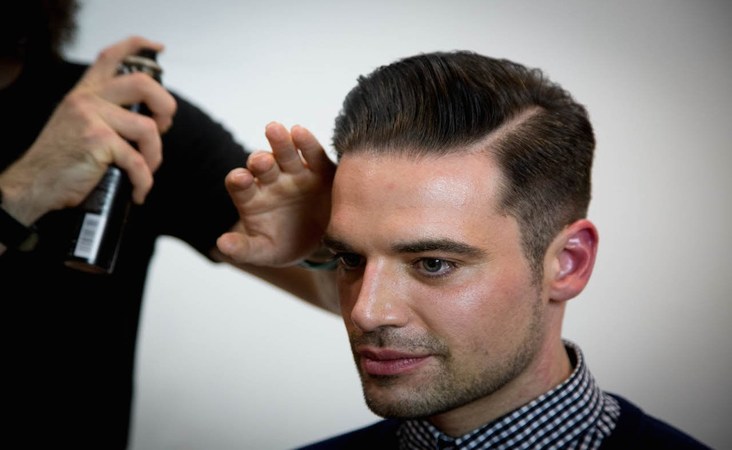
#3 Hair systems
Yes! Hair systems and wigs are perfect solutions to recover from non-scarring alopecia as well. Below are the newest hair replacement systems added to our catalog:
While hair loss caused by non-scarring alopecia can be upsetting, it poses no serious risk to our overall health. All of the above treatments can help you overcome hair loss. However, if you are concerned about the side effects, we recommend using hair systems.
With that taken into consideration, it’s time to wrap up our detailed guide on scarring vs. non-scarring alopecia. We strongly advise consulting your trichologist before using any surgery and medication-based treatments to combat any hair loss condition whatsoever.
Got any queries to ask? Send them at support@lordhair.com and have them answered by our hair experts!


